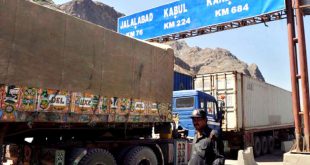An uptick in the levels of violence has been witnessed since the start of the landmark intra-Afghan talks in Doha on September 12. Both the negotiating sides have been blaming each other for ramping up violence while fears simmering that increased violence could potentially cause a setback to the nascent and delicate peace parleys. The violence, however, seems to have been waged by one side and then reciprocated by the other. The Afghan government has been demanding a ceasefire from the outset of the Doha talks but the Taliban do not agree with it and are linking any lowering of violence to progress in the peace process towards a settlement – a notion confirmed recently by the US point-man for Afghanistan reconciliation Zalmay Khalilzad as well. This is while October 2 marks the International Day of Non-Violence while Afghanistan has been the main victim of war-related violence, among others, over the past few decades. Unfortunately, in addition to war-perpetrated violence, Afghans are suffering from other types of violence as well – such as child maltreatment, youth violence, sexual violence, gender-based violence against women, etc. Following the war-related violence, ruthlessness against women is staggering as the Afghan government reported registering and addressing 2,088 cases of violence against women since the beginning of the fiscal year 1399 alone, with prominent examples being harassment, raping and beating. On top of that, the Afghan-society is fraught with – either domestically caused or externally imposed – taboos, bad practices, extremist exercises that translate to violence in one form or another. Given the circumstances, the occasion of non-violence day, which is the birthday of Mahatma Gandhi, should be deeply pondered over. His lessons, strategies and philosophy of non-violence must be analyzed in terms of how he was able to reach his political convictions and goals through peaceful movements. Another pacifist, Khan Abdul Ghafar Khan should be seen as an exemplary example for using non-violent peaceful means and movements to make reforms and achieve results. The philosophies of these people are more relevant today than ever – considering that everybody concurs that violence and war are not the solutions here. The strategies of these figures should be used as trailblazing means and adopted by all conflicting sides in Afghanistan to bring about their desired political or social change through the use of peaceful means, not force. Moreover, to root out all violence-like thinking and practices in Afghan society, extinguishing the fire of war-caused violence is a sine qua non and a first step. It’s because violence stemming from war is just the tip of the iceberg and the most known kind while there are other types that need to be eliminated too – something that will facilitate a guaranteed, long-lasting peace and stability to come to fruition in the country.

 Afghanistan Times
Afghanistan Times



